
Schinia, commonly called flower moths, is a large genus of moths belonging to the family Noctuidae. The genus has a Holarctic distribution with the vast majority of species being found in North America, many with a very restricted range and larval food plant.

Schinia arcigera, the arcigera flower moth, is a moth of the family Noctuidae. The species was first described by Achille Guenée in 1852. It is found in North America from Nova Scotia to Florida, west to Arizona and Idaho, north to Saskatchewan.

Schinia ciliata is a moth of the family Noctuidae. It is found from southern California east to Utah, Arizona, Colorado, New Mexico, western Kansas and Oklahoma, and scattered throughout Texas.
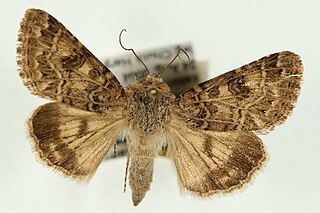
Schinia cupes is a moth of the family Noctuidae. It is found from Texas, west to New Mexico and north to Kansas and Colorado.

Schinia honesta, or the black-spotted gem, is a moth of the family Noctuidae. The species was first described by Augustus Radcliffe Grote in 1881. It is found in southern Canada and California. The wingspan is about 25–26 mm.
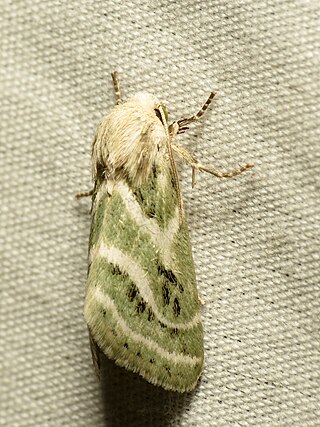
Schinia accessa is a moth of the family Noctuidae. It is found in Texas, southern Arizona, Colorado and Mexico.

Schinia acutilinea, the angled gem or acute-lined flower moth, is a moth of the family Noctuidae. The species was first described by Augustus Radcliffe Grote in 1878. It is found in the dry southern portions of Saskatchewan, Alberta and British Columbia, south across the plains and Great Basin to southern Arizona and California.
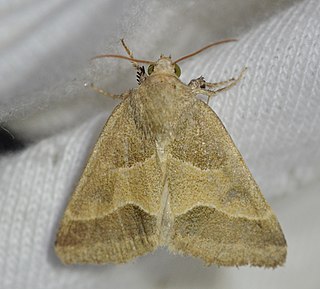
Schinia gracilenta, the slender flower moth or iva flower moth, is a moth of the family Noctuidae. The species was first described by Jacob Hübner in 1818. It is found from the US states of New York to Florida and Nebraska to Arizona. The species is listed as endangered in Connecticut.

Schinia nuchalis, the spotted sage moth, is a moth of the family Noctuidae. The species was first described by Augustus Radcliffe Grote in 1878. It is found from the Great Plains and Great Basin, from southern Saskatchewan, Alberta and British Columbia south to northern Arizona. The Eurasian Schinia scutosa is no longer considered a synonym of Schinia nuchalis.
Schinia persimilis, the persimilis flower moth, is a moth of the family Noctuidae. The species was first described by Augustus Radcliffe Grote in 1873. It is found from in western North America from east central Alberta and the Cypress Hills in Saskatchewan north to the southern Yukon, west and south to Colorado, Utah, California and Oregon.
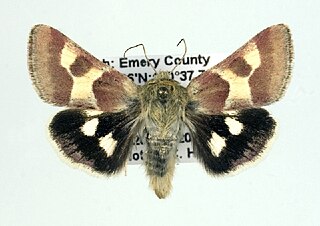
Schinia suetus is a moth of the family Noctuidae first described by Augustus Radcliffe Grote in 1873. It is widespread in the mountains of western North America, from southern Alberta west to British Columbia, south at least to Colorado and California, east to Idaho and New Mexico.

Schinia villosa, the little dark gem, is a moth of the family Noctuidae. The species was first described by Augustus Radcliffe Grote in 1864. In North America, it is mostly a western mountain species, however it has also been found across the plains eastward across Alberta and Saskatchewan to southern Manitoba. To the west it is found up to the coast ranges of Washington and British Columbia, south to Arizona.

Schinia nundina, the goldenrod flower moth, is a moth of the family Noctuidae. The species was first described by Dru Drury in 1773. It is found in North America from Minnesota to southern Ontario and Nova Scotia, south to central Florida and southern Texas. Records include Arizona, Kansas, Nebraska, New York, Maryland, Oklahoma and South Carolina.
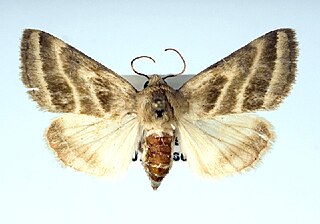
Schinia trifascia, the three-lined flower moth, is a moth of the family Noctuidae. The species was first described by Jacob Hübner in 1818. It is found in North America from Ontario and Massachusetts south to Florida and west to Arizona, Colorado and Wyoming. It has also been reported from Louisiana.

Schinia scutosa, the spotted clover, is a moth of the family Noctuidae. It is found from Europe to southern Siberia, the Near East and the Middle East and from central Asia to Japan. In North Africa it is found from Morocco to Egypt.
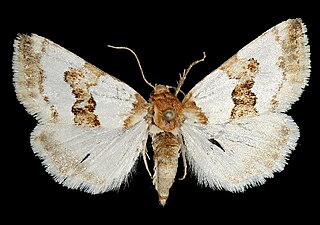
Schinia chryselloides is a moth of the family Noctuidae. It is found in Colorado from the base of the foothills in Jefferson County, east to Lincoln County, in extreme south-eastern Colorado, south to south-eastern Socorro County, New Mexico, and east to the south-eastern panhandle of Texas and extreme southern Texas.

Schinia niveicosta is a moth of the family Noctuidae. It is found from south-western Utah and western and south-eastern Arizona, west to southern California and southern Nevada.

Schinia lynda is a moth of the family Noctuidae. It is only known from the dunes in the high desert of south-central Oregon.
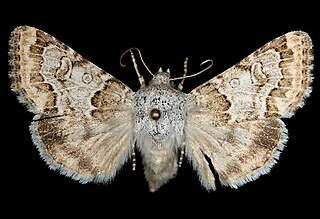
Schinia deserticola is a moth of the family Noctuidae. It is found from southern California to southeastern Arizona and north to west central Utah and southeastern Oregon.
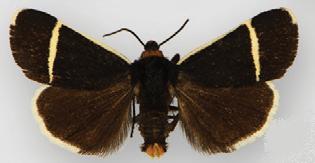
Pseudalypia crotchii is a moth of the family Noctuidae. It is found in California and Colorado.
















